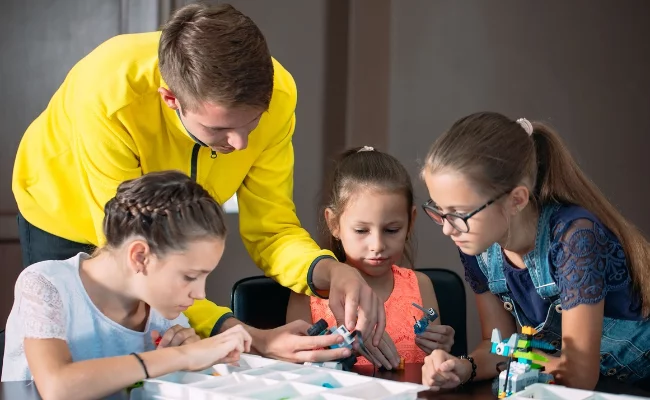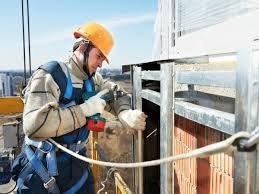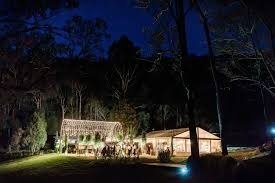Valley of Flowers Trek: The Himalayan Trail That Feels Like a Disney Movie (Minus the Talking Animals)
If you’ve ever stared at your screen, dead-eyed, wondering if you’ll ever see colors other than grey, beige, or “Zoom call blue” again — allow us to introduce you to the Valley of Flowers trek. A place so colorful, so fragrant, and so stunning, it feels less like a real place and more like nature went full Photoshop.
Tucked away in the Chamoli district of Uttarakhand, this trek is one of those rare journeys that doesn’t require mountaineering experience, a six-pack, or a desperate search for Wi-Fi. All you need is a sense of wonder, a decent pair of hiking shoes, and some respect for your knees.
This isn’t a “conquer the peak” kind of trek. It’s more like a floral therapy session with mountain views — and it might be exactly what your burnout needs.
First Things First: What Is the Valley of Flowers?
Imagine walking into a natural amphitheater carpeted in over 500 species of wildflowers. Add to that snow-capped Himalayan peaks in the background, mist rolling in dramatically, butterflies dancing mid-air, and rivers humming below.
That’s the Valley of Flowers National Park — a UNESCO World Heritage Site that comes alive between July and early September. It’s part of the Nanda Devi Biosphere Reserve, and yes, it’s every bit as magical as it sounds.
Legend has it this valley was discovered by accident in 1931 when a group of mountaineers, lost and probably very tired, stumbled upon it and thought they’d entered paradise. Can confirm: not a bad place to get lost.
Trek Facts for the Overprepared
- Location: Chamoli, Uttarakhand, India
- Best Time to Go: Mid-July to late August (peak bloom!)
- Altitude: Valley sits at ~12,000 ft (3,658 m)
- Duration: 6 days (start to finish, including travel)
- Difficulty: Easy to moderate (read: your legs will be sore, but they won’t disown you)
- Total Trekking Distance: ~38 km round trip
This is a monsoon trek, so expect to get rained on. Embrace it. That’s what makes the flowers pop.
Route Overview (Or, What Your Legs Will Be Doing)
Day 1: Rishikesh to Govindghat (via Joshimath)
A long, scenic drive that turns your city brain to mush. Mountains, rivers, pine forests — and a lot of hairpin turns. Pop that motion sickness pill if you’re not built for the Himalayas on wheels.
Day 2: Govindghat to Ghangaria (10 km trek)
The trek begins! A gradual climb alongside the Pushpawati River. You’ll pass dhabas, mules, and probably a lot of people stopping every five minutes “just to enjoy the view” (code for: gasping for breath).
Day 3: Ghangaria to Valley of Flowers and back (7 km)
This is the day. You’ll enter the national park and basically walk through a kaleidoscope. Expect carpets of blue poppies, Himalayan orchids, cobra lilies, and dozens more you can’t pronounce but will definitely photograph.
Day 4: Ghangaria to Hemkund Sahib and back (optional but worth it)
A steep climb to a high-altitude Sikh shrine at 15,200 ft. Even if you’re not into religious sites, the crystal-clear lake and surrounding peaks are spiritual in their own right. Bonus: you get served hot chai and prasad at the top. Life = complete.
Day 5: Ghangaria to Govindghat (10 km trek down)
Say goodbye to flower valley and hello to sore knees. The descent is easier on the lungs, harder on the joints. Stretch and snack accordingly.
Day 6: Drive back to Rishikesh
You return tired, sun-kissed, and with at least 300 photos of flowers you’ll struggle to identify later. Worth it.
What to Pack (And What Not to Forget)
- Rain gear – Poncho, rain jacket, waterproof backpack cover. It will rain.
- Comfortable trekking shoes – Slippery trails and flip-flops are a cursed combo.
- Warm layers – Mornings and Hemkund Sahib = brrr.
- Quick-dry clothes – Cotton is a betrayal.
- Camera or phone with space – Because “just one photo” is a lie you’ll tell yourself 500 times.
And snacks. You’ll thank your past self for packing trail mix when you’re halfway up and the next dhaba is still an hour away.
Who Is This Trek For?
This is the perfect trek if you:
- Want your Instagram to look like a National Geographic spread
- Prefer floral overload to hardcore summit-pushing
- Are a first-time trekker looking for something stunning but doable
- Need a break from city noise, deadlines, and people who say “let’s circle back”
And honestly? If you’re just someone who wants to walk through beauty so pure it makes you question your life choices (in a good way), this one’s for you.
The Monsoon Myth: “But Isn’t It Rainy?”
Yes. And that’s the whole point.
Without the rain, there are no flowers. It’s what transforms this valley from a sleepy alpine meadow into a botanical wonderland. Trails can get muddy, yes. But with the right boots and the right mindset (read: embrace the squelch), you’ll be just fine.
Pro tip: Bring a small umbrella. Instant shelter + low-key adorable photo prop.
READ MORE : Trends and Innovations in Siding from Bay Area Companies
Unexpected Highlights
- The scent of wildflowers in the air (yes, that’s a thing)
- Butterflies everywhere — like nature’s confetti
- Silence so pure, it makes you realize your phone’s never truly been on silent
- The sound of glacier-fed rivers rushing beside you as you walk
And if you’re lucky, you might even spot the elusive Himalayan blue sheep or a snow leopard paw print (don’t worry — they’re more into goats than humans).
Final Thoughts: This Isn’t Just a Trek. It’s a Reminder.
In a world obsessed with moving fast, the Valley of Flowers Trek is an invitation to slow down. To breathe mountain air. To smell actual roses (and lilies, and primroses, and dozens of things you’ll pretend to recognize). To remember that nature isn’t just out there — it’s alive, thriving, and waiting to show off.
It’s not about getting to the top. It’s about soaking it in. Petal by petal. Step by step.
So, if you’re tired of concrete, calendars, and never-ending email threads — this one’s calling. You’ll come for the flowers. You’ll stay for the peace. And you’ll leave feeling… lighter.
Just don’t blame us if you never look at city parks the same way again.
Want a deeper dive into routes, permits, weather, and local hacks? This Valley of Flowers Trek Guide has everything you need to get started — minus the flower puns (you’re welcome).






